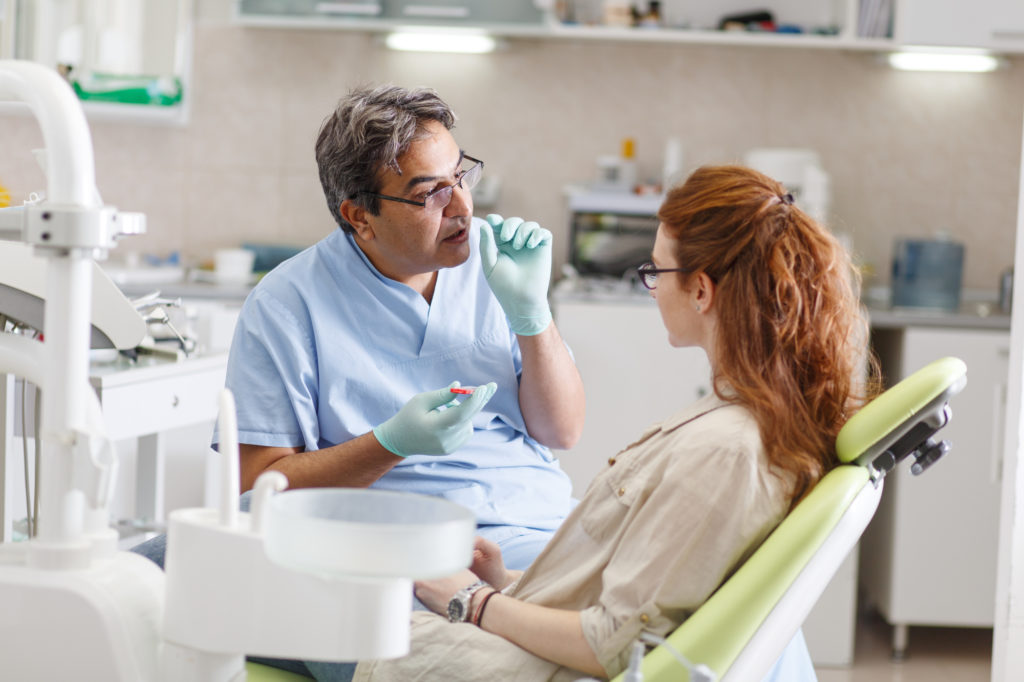
47.2 percent of people age thirty and over have experienced gum diseases. In fact, gum issues increase with age, hitting around 70 percent. Men are more likely than women to have gum problems, and smoking makes it worse.
Luckily, dentists who specialize in an extra three years of training can treat gum diseases. They become periodontists equipped with both surgical and non-surgical techniques. If you experience gum problems, continue reading to learn more about periodontal services and procedures.
Gum Grafts Surgeries
Gum recession can expose dental roots. Gum graft surgery will conceal the exposure and prevent further recession and bone loss. Your periodontist will use gum tissue from your palate or another donor to cover the exposed root during gum transplant surgery.
The periodontist can perform gum graft surgery on a single tooth or several teeth. It can help decrease tooth sensitivity and enhance your smile.
Regeneration Procedure
When the bone that supports your teeth has been damaged, your periodontist may propose a regeneration procedure. These methods can reverse some of the harm caused by bone and tissue loss.
Your periodontist will fold back the gum tissue and remove any germs. Membranes (filters), bone transplants, or tissue-stimulating proteins may be used. This promotes your body’s inherent capacity for bone and tissue regeneration.
Dental Crown Lengthening
Certain people may have a “gummy” grin due to the short appearance of their teeth. The teeth may be the right length, but excess gum tissue can hide them. Your periodontist will repair this with a dental crown lengthening treatment.
Your dentist can sculpt excess gum and bone tissue to reveal more of the original tooth. This procedure can occur on a single tooth to align the gum or several teeth to show a natural, wide grin.
Periodontal Pocket Procedure
Your bone and gum tissue should form a close fit around your teeth. Periodontal disease destroys this supportive network, resulting in pocket formation. These pockets deepen with time, creating a place for micro-organisms to grow.
Your periodontist will fold back the gum tissue to eliminate bacteria formation before reattaching it. They will also smooth out the bone’s uneven surfaces to minimize regions where disease-causing germs might lurk. This enables the gum tissue to reconnect to healthy bone more effectively.
Root Planing and Scaling
This is a procedure where the periodontist thoroughly cleans the root surfaces of your teeth. Your periodontist will scale under the gumline to remove plaque and bacteria from the pockets. Root planing enables your periodontist to smooth out the tooth root, preventing plaque adhesions.
Laser Therapy
Each laser has a unique wavelength and power level that is safe to use during a procedure. However, with insufficient wavelength or power level, it can be harmful to the tissue.
Tray Delivery Systems
This system contains a custom-fit tray created from the patient’s mouth imprints. At home, patients utilize the tray to administer drugs recommended by their dentist. They are similar to fluoride trays typically used to prevent tooth decay.
Dental Implants
A dental implant is an artificial tooth root that is surgically implanted into the jaw. This is to support a prosthetic tooth or bridge. Dental implants may be a viable choice for those who have lost one or more teeth due to periodontal disease.
Sinus Augmentation
The upper back jaw has been one of the most challenging places to install dental implants. Sinus augmentation can elevate the sinus floor and establish bone for dental implant insertion.
Ridge Modification
Deformities in the upper or lower jaw result in an insufficient bone quantity for dental implants. To remedy the issue, your dentist can pull the gum away from the ridge, exposing the bone. After that, they will fill the space with bones to reinforce the ridge.
Ridge alteration can enhance the aesthetics of the jaw. This helps increase the likelihood of successful implant placement.
Gum and Jawbone Indentations
When a tooth is extracted, it might leave an indentation in the gums and jawbone. Not only does this indentation seem strange, but it may also affect the dental implant.
Ridge augmentation can correct this deficiency by restoring the gums and jaw to its normal contours. After that, a dental implant can be incorporated.
Periodontal Follow-Up and Reevaluation
After a periodontal procedure, wound healing is checked every two weeks. This is to prevent infection or abscesses that can impair the healing process.
Periodontal Surveillance Status
After 6-8 weeks, the effects of periodontal treatment are reevaluated. This follow-up is to evaluate the response to therapy. Plaque and bleeding scores should be decreased in tandem with any tooth movement. Pus discharge and probing depths should also have been minimized or stopped.
What to Expect During Recovery?
Your recovery time will vary according to the severity of your procedure. Moderate bleeding and pain are to be expected after any periodontal procedure. Around a day following your treatment, you should be able to resume many typical activities.
Many periodontists advise patients to consume soft meals for the first two weeks after the operation. Proper meals include the following:
- Jello
- Pudding
- Yogurt
- Ice cream
- Scrambled eggs
- spaghetti
- Cottage cheese
- Mashed potatoes
Following surgery, your dentist may recommend that you use a specific mouth wash or take an antibiotic. You may not be able to brush or floss until your teeth have healed.
What Are the Costs of Periodontal Procedures?
Periodontal surgery costs vary significantly based on the kind of operation performed. Treatment for gum disease might cost between $500 and $10,000.
Several insurance providers will pay a portion of the cost. Consult with your dentist if you are unable to finance the operation. Occasionally, your dentist can work out a better payment arrangement with insurance providers.
Where Can You Find Reliable Periodontal Services?
Before considering any periodontal treatment, it’s important to consult with your dentist. Your dentist will inspect your gums for pain, bleeding, sensitivity, and abnormal odor. Depending on the situation, they can refer you to the proper specialist.
If you are in Houston, it’s best to find periodontal services in Houston. For reliable experts in this field, check out periodontal services in Memorial. You can also contact us for more information and availabilities.

